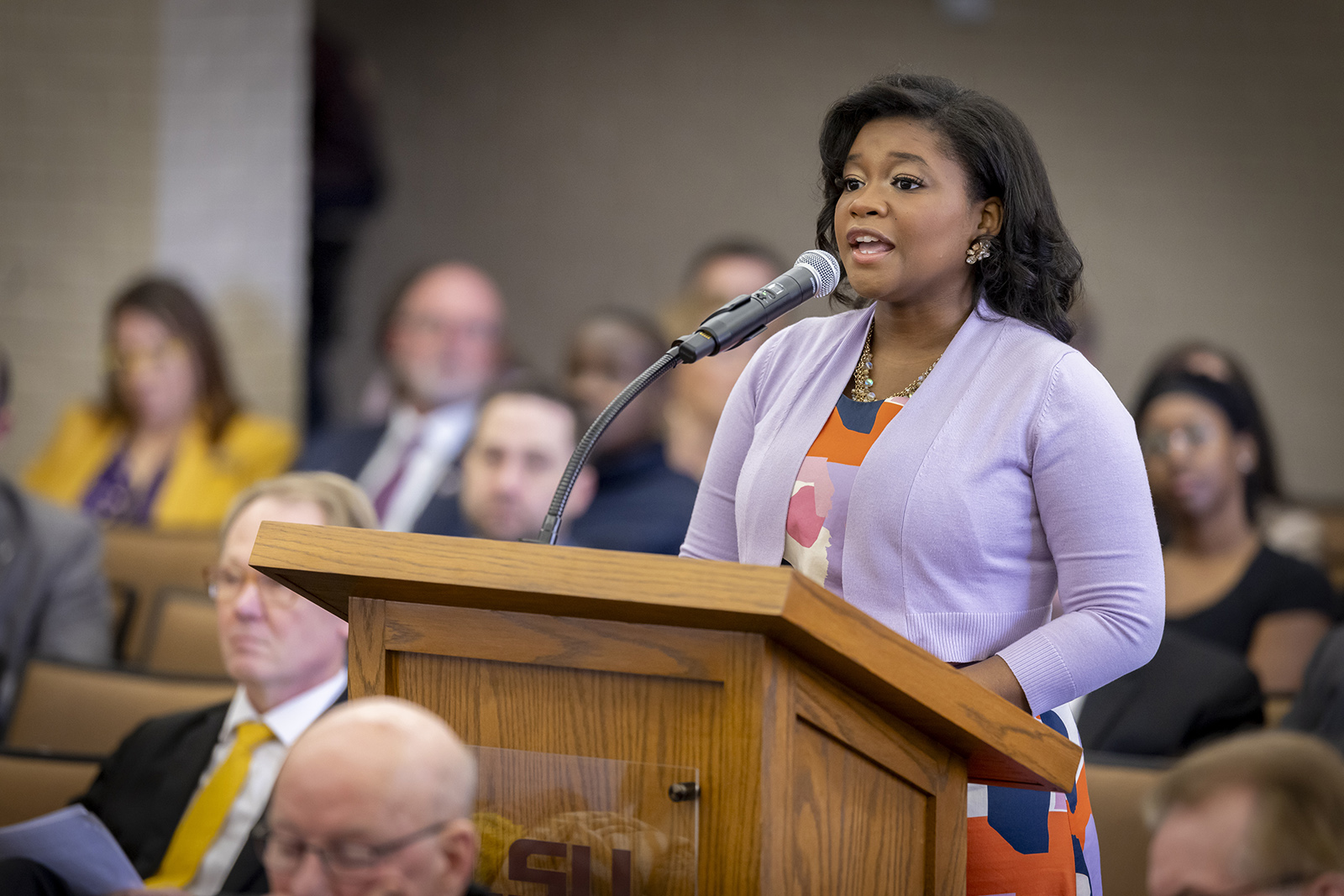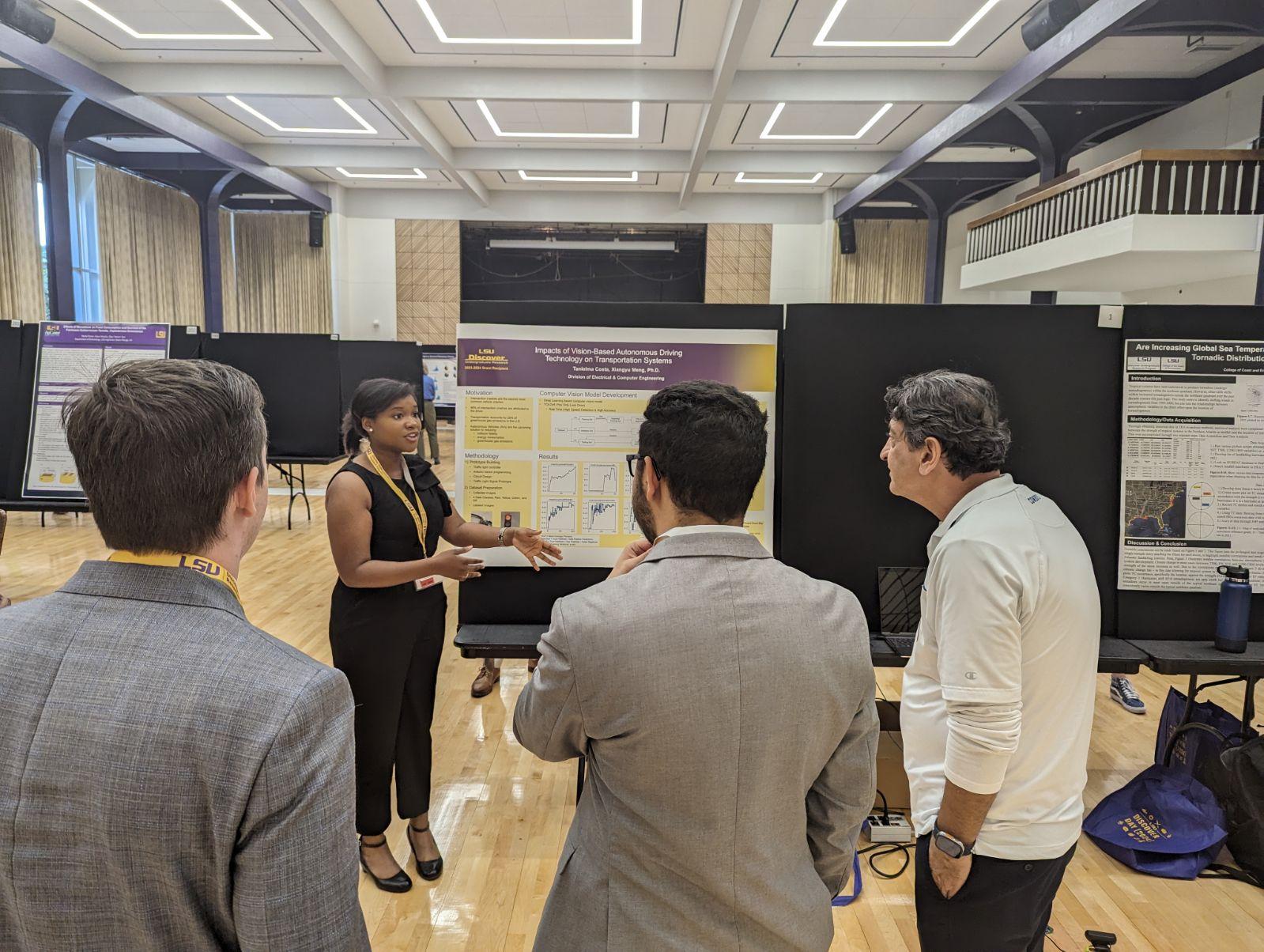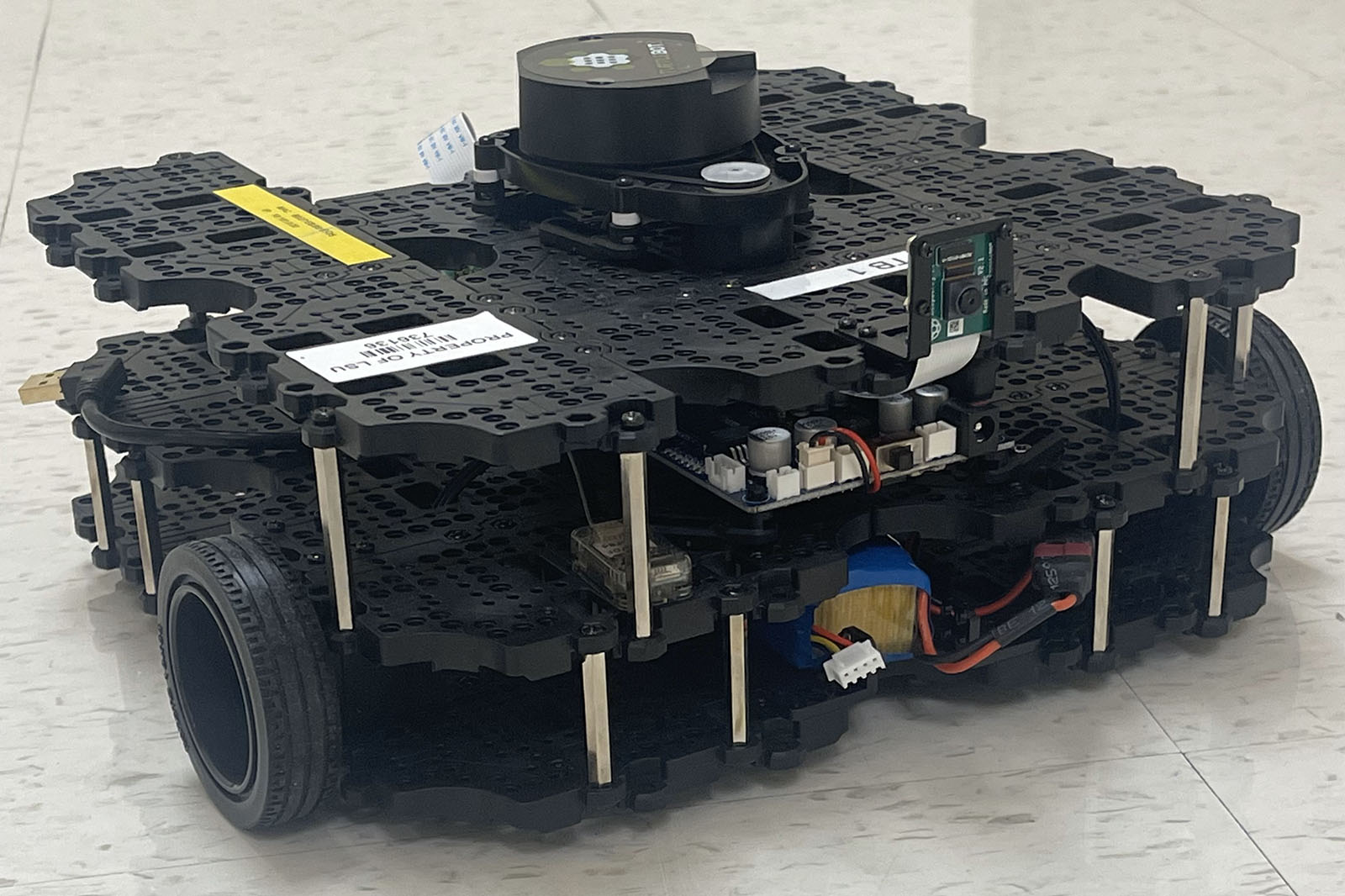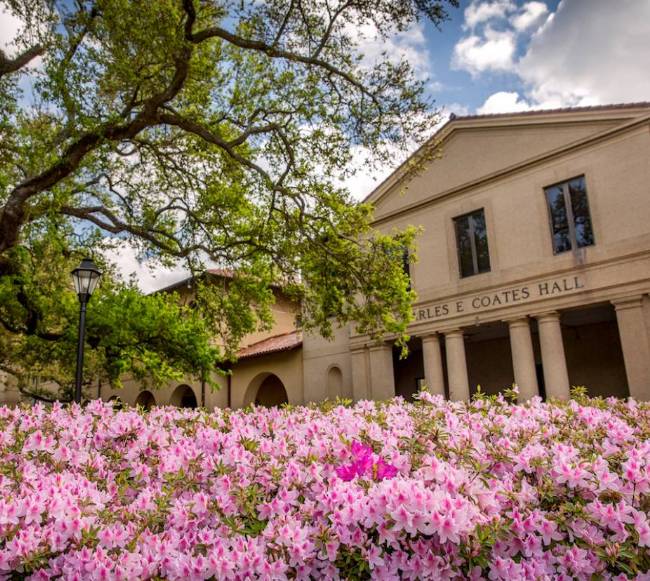LSU Student Researcher Using AI to Help Reduce Accidents and Pollution at Traffic Lights
April 11, 2025

Alcina DaCosta speaks at the LSU Board of Supervisors meeting in February where she discussed her traffic light detection project.
Intersection crashes are among the most common traffic collisions in the United States, with 96% caused by driver error. Also, vehicles idling at intersections waste fuel and spew tons of carbon dioxide into the atmosphere each year in a typical city.
Self-driving cars could help solve these problems, but only if they can accurately detect traffic lights in real time.
Alcina DaCosta, an LSU undergraduate working across multiple fields, is developing advanced computer programs to tackle this challenge using artificial intelligence.
“My research takes away the human factor in traffic light collisions and optimizes the reduction of greenhouse gas emissions by vehicles,” she said.

Alcina DaCosta presents her traffic light detection project in 2024 at LSU Discover Day, a conference held annually by the Office of Undergraduate Research.
Her work relies on a powerful AI-based image recognition system called YOLO, short for “You Only Look Once.” This system can identify objects quickly with more than 90% accuracy, making it a strong candidate for improving self-driving car safety.
DaCosta explained that current detection systems aren’t as fast as YOLO because most rely on a less efficient method of using sensors to measure distances between objects rather than visually recognizing them.


“I wired and programmed a traffic light signal, took images of it at varying distances and lighting to create my dataset,” DaCosta said. “Then, I labeled the images and used them to train my algorithm so that when I run it, it detects the colors changing from red, yellow, to green in real-time.

Alcina DaCosta uses a mobile robot drone known as the Turtlebot for training and testing her model.
“The future direction of my research is to combine it with automotive controls so that a car will stop, turn off the engine, read when the light turns green, and go independent of a driver.”
Her research combines technology that currently exists — shutting down the engine at the light when a driver brakes — and automates it so that a self-driving car determines when the engine can be shut down to emit less greenhouse gases. This environmental component of the research is important to DaCosta.
“I have always cared about the environment. In high school, I collaborated on a documentary called Hollow Tree, which is about Louisiana’s environmental issues,” she said. “So, I have a deep sense of responsibility to use my skills in a way that is mindful of how it can benefit society at large.”
DaCosta’s research advisor, Dr. Xiangyu Meng, is an assistant professor in LSU’s Division of Electrical & Computer Engineering in the College of Engineering. He says what makes her research particularly impactful is its practical implementation.
“While there is still room for refinement, Alcina’s work represents a meaningful step forward in the field,” he said. “Her ability to combine theoretical innovation with practical implementation highlights her technical skill and creativity, moving us closer to a future where autonomous systems can operate safely and reliably in diverse driving conditions.”
Growing up in Baton Rouge
DaCosta was born in Luanda, Angola, and moved to Baton Rouge in 2009 at age 7. She said she lived close enough to LSU that it became part of her life and identity, adding that visits to see Mike the Tiger on campus were a regular event.
“I have a picture of me goofing off in my parents’ classroom when they were taking English courses through LSU over the summer of their first year here,” she said.
At age 12, her first iPhone and a fascination with Tony Stark’s sleek, holographic, transparent phone in 2016’s Iron Man 2 led her to discover who makes smartphones. Based on her research, she decided to become a computer engineer.
“So many of the successful and thriving people in my life went to LSU. Naturally, I viewed attending LSU as an honor,” she said. With guidance from the Baton Rouge Youth Coalition, she went to work on improving her ACT score, which paid off with an admission letter and scholarship to LSU.
“LSU made it clear how much they wanted to invest in me, so it was a no-brainer,” she said.
Because of the 47 credit hours she achieved through advanced placement courses in high school, she was able to pursue her dream in computer engineering at LSU, along with three other degrees. She’s on track to graduate with degrees in computer engineering, electrical engineering, French, and international studies in May 2026.
“All of my majors stimulate my brain, but they all matter to me and give me a tremendous sense of direction,” she said.
Doing Research at LSU
DaCosta said Sarah Ferstel, director of LSU’s Office of Undergraduate Research, first encouraged her to do research. Her initial assignment involved analyzing reports and finding trends related to flooding in Baton Rouge.
When DaCosta learned that Meng was researching automation and other areas that appealed to her, including computer vision-based autonomous driving research, she reached out to him.
“I explained that I have a computer science background; I wanted to see how computer science can be applied with electrical components; and I had a willingness to do research advised by him,” she said.
Meng welcomed her to the team and was immediately impressed.
“What stands out most about Alcina is her proactive approach to learning and problem-solving. She has an exceptional ability to quickly grasp new concepts and generate innovative ideas to address her challenges,” he said.
“For example, her development of a real-time traffic light detection system required her to master advanced techniques in computer vision and machine learning, and she did so with remarkable independence and resourcefulness.”
Under the day-to-day guidance of Tonmoy Sarker, an electrical engineering PhD candidate at LSU, she learned more about traffic light detection research and research in general, including finding resources and overcoming setbacks.
“From 2023 to 2024, I was the only woman in my team. However, I always felt welcomed and encouraged to ask questions and for help,” she said. “Research can be frustrating, and there were a lot of long days of trying to find answers and having to start over, but it’s worth it and taught me resilience.
“Other members of my team include Yunpeng Han, Jones Essuman, and Pranav Pothapragada. They were all part of my support system and made me feel like I belong in my field.”
Plans for the Future
DaCosta’s future plans include applying to PhD programs in electrical and computer engineering, though she may consider going straight into the field after graduation to gain experience.
“My ultimate goal is to be a sustainable technology development research lead/consultant/manager for a tech company where I’d be able to improve the design of devices,” she said. “I’ve seen professors that engage in both academia and the private sector, so that has fascinated me.
“No matter what, I want my work to involve sustainability. This research has proved to me that it is very rewarding to pursue solutions despite how difficult research is.”
She says her research experience also has taught her to value personal growth and vulnerability in pursuing things outside her comfort zone. She says if she can find time for research, other students can, too.
“School work always comes first, but I believe that research is worth it because you gain skills that go beyond the classroom and give you a glimpse of how much value your degree gives you,” she said. “It gives you tangible evidence of the usefulness of what you are learning in class.”
As her mentor, Meng said watching Alcina grow into a confident and capable researcher has been rewarding. “Her passion for her work, dedication, and intellectual curiosity make her a standout student with a bright future,” he said.
“Her ability to see the bigger picture and align her research with global challenges like climate change sets her apart as a forward-thinking and socially conscious researcher.”
Next Steps
Let LSU put you on a path to success! With 330+ undergraduate programs, 70 master's programs, and over 50 doctoral programs, we have a degree for you.


